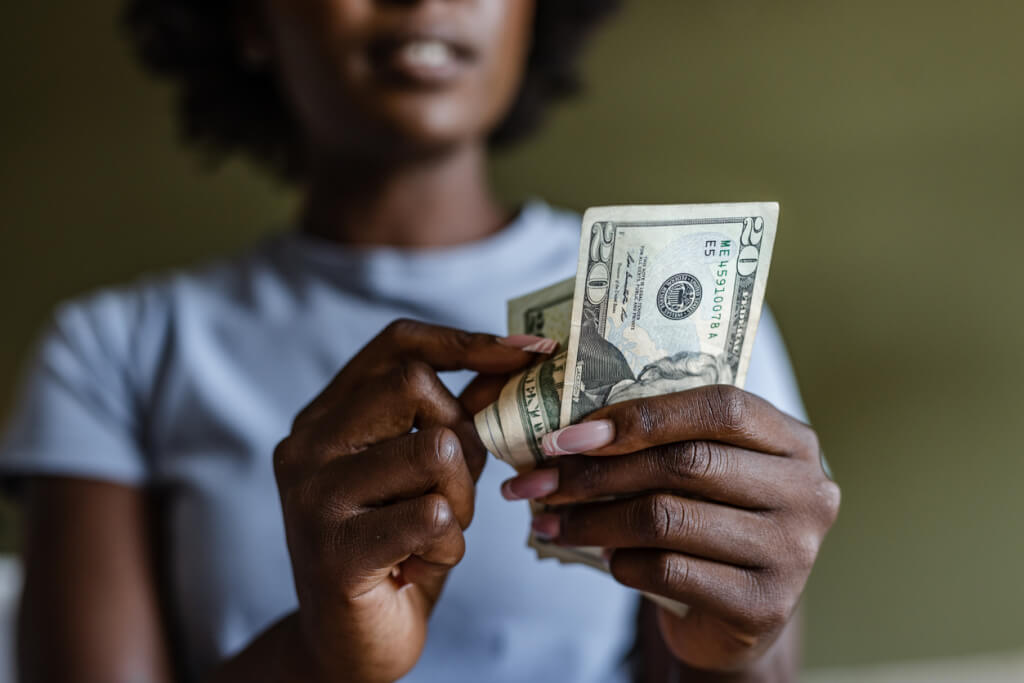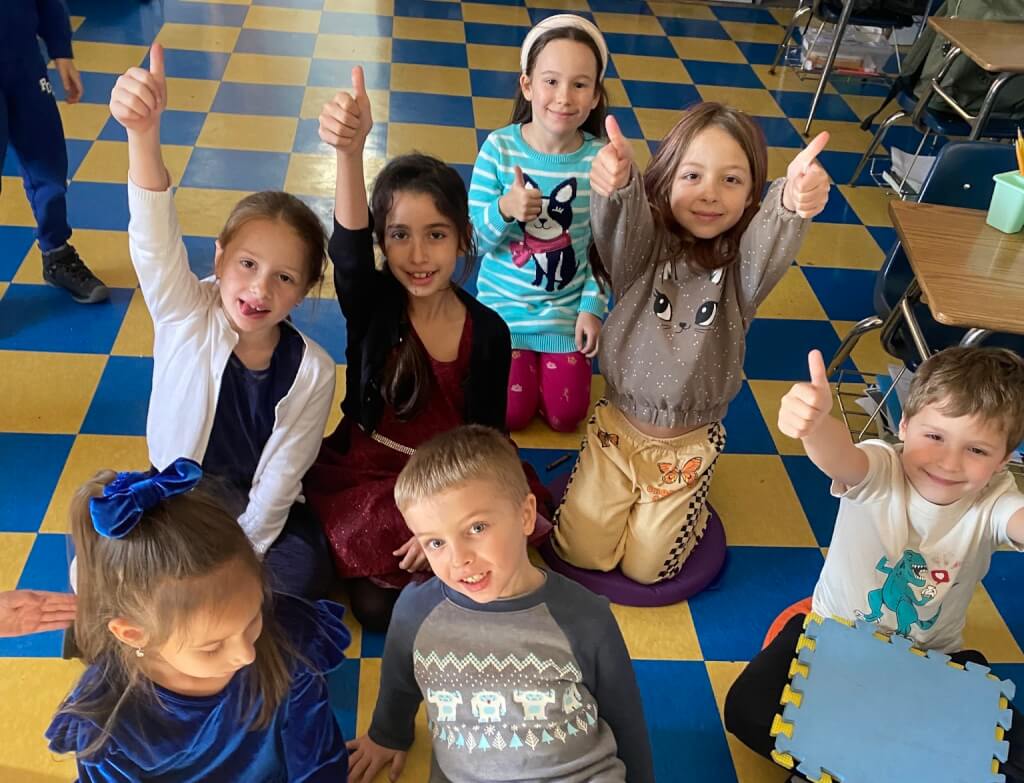Garbage queen: a girl, digging in New York waste, became famous in social networks
'24.11.2022'
Nadezhda Verbitskaya
The garbage of New York is the treasure of this girl. She uses her social media platform to fight the culture of surplus trash. R.D.com.
Working at an investment bank in New York in the mid-2010s, Anna Sachs was not living the life she dreamed of. Of course she was happy, but she still wanted to do something that felt important and fulfilled on a deeper level.
Some people in search of meaning in life could read a self-help book, try to redo something. Or, say, voluntarily dedicate a few hours a week to volunteering. Sachs packed up and moved to Connecticut for three months to participate in Adamah, a Jewish farming program. It focuses on sustainable living and growing organic food. When Sachs returned to New York, she already had a new goal and many new skills to make her dreams come true.
“What I really remember about Adamah (meaning 'Earth' in Hebrew) is how little waste they produced. And even this small amount was mostly composted,” she says. “And I thought, why aren’t we doing this here? Once I was walking around my neighborhood and was shocked by how many bags of waste were piled up. After what I saw there, I began to wonder what is actually in all these bags and garbage cans.”
Instead of being stuck in an endless cycle of climate worries, Sachs embarked on a mission. It was she who made the woman one of the most influential climate change activists on social networks today.
Walking on trash
The Adamah program has opened Sacks' eyes to the local, national and global damage caused by consumer culture and the need to find solutions. So, in 2016, she took a composting master course and started working for a food rescue program. Sachs found her calling in 2017. To satisfy her curiosity, to get food and household supplies, the activist began what she calls “walking through the trash”.
As she walks around her neighborhood, Sachs, 31, digs through the trash for reusable items. Soon her trash walks expanded. Corporate waste containers have been added to them along with household waste. Surprisingly, she discovered many wonderful things - such as clothes, designer accessories, dishes and food. Sachs documents all of this on Instagram and TikTok.
Exposing the culture of consumption
Under the pseudonym The Trash Walker, Sachs quickly gained popularity with her educational, funny and surprising videos that highlight the issues of consumerism. In social networks, the girl shares information on how to lead a more sustainable lifestyle. “The root problem is overproduction, which leads to overconsumption. And that creates a huge amount of waste,” she says.
Think for a moment about your overstuffed closet. The transience of fashion makes it easy to buy the latest trends on the cheap. But these clothes can end up in the trash, even if you sell them or donate them. Sacks posted on Instagram a mountain of thrift store trash. There, black garbage bags filled with clothes are lying on the sidewalk. They contain goods that the store could not sell.
“It was very disappointing to see, but also not surprising,” Sacks says. “We as a society produce too many clothes. We need to produce less.”
Throwing goods on the side of the road
The lesson from Saks' Garbage Walk is not just that we need to produce less garbage. We should stop throwing good things in the bin. Dig through the trash of any retail store and you'll agree.
“I don’t usually gasp or be surprised, but this is shocking,” Sachs says in a 2021 TikTok video in which she retrieves 16 unopened boxes of tissues and two rolls of toilet paper from Dwayne Reed’s trash heap. In another video, she rescues three KitKat packages from the trash can.
But waste is far from just Duane Reed's problem. The eco-activist regularly finds bags of candy and unopened boxes of tampons at other pharmacies, flowers at flower shops, and decorations at party shops. And in a charity trash can, she found an unopened $60 Pottery Barn baby blanket and a box of colored utensils.
In addition, New York City public schools are full of food waste. “I think the New York public school system can better manage its inventory,” Sacks says as he rummages through hundreds of bags of mini carrots, “so it doesn’t go to waste like it does now.”
Getting to the root of the problem
The fact is that corporations and other organizations (such as public schools) often choose to destroy or discard items rather than give them to people. According to Sacks, the main reason for these losses is the way our current tax laws are structured. Retailers that destroy goods may claim a refund as a loss on their taxes and receive a refund on any rates. If they give away goods, they can only claim a small amount as a charitable deduction from their taxes. This gives companies a financial incentive to be wasteful instead of giving away goods.
The hands of employees are often tied when it comes to recycling protocol. "We're not allowed to take this home," Sachs said, filming as she found scattered boxes of Duane Reed tissues. “It would be considered theft, and people could be fired. The same goes for donations. Even if an employee wants to donate, they can be fired for stealing for a donation.”
Ideally, companies should donate things they can't sell to "free shops". Or donate directly to those in need rather than throwing them in the trash cans. Sachs is calling for bipartisan “Donate, Don't Throw” legislation to stop corporations from throwing goods to the curb.
“Corporations need to do a better job of reducing their waste. But voters also need to speak up and get that policy changed,” she says. And while you're at it, make sure you're buying from sustainable brands and not those that contribute to the climate crisis.
Making changes
Sax's videos have gone viral many times, causing shock waves in the industries she addresses. Her most viewed video of 2021 showed brand new luxury Coach bags being cut open by employees before being thrown away.
This is a way to “destroy” unnecessary inventory in order to take advantage of a tax loophole. (And perhaps as a way to maintain the luxury brand's exclusivity.) And that's despite the Coach website's commitment to sustainability. It says the company encourages the repair of damaged bags and is part of a circular economy.
The 56-second video aired in October. And a week later, Coach announced a change to its policy: it will no longer destroy in-store returns. Sacks has discovered that they may destroy other unwanted items, for example, if they don't like the stitching or color.
In 2019, she sued CVS for throwing away a dumpster full of perfectly good medical supplies, including much-needed infant formula. Sachs wrote to the CEO suggesting they form local donation partnerships. In response, the company said that they would consider this issue. When another video of her diving into a CVS dumpster went viral, the company decided to ditch plastic bags.
On the subject: New York is changing the garbage collection system: your daily routine will have to change
Holding companies accountable for their promises is another of the activist's goals. In 2016, Starbucks made headlines by announcing that by 2020 it would be donating all unsold products instead of throwing them away. The 2020 Sachs videos showed that despite the promises, the corporation is still throwing away tons of good food. In 2022, Starbucks reopened with a pledge to reduce overall food loss and waste at its US facilities by 2030% by 50.
Sachs amplifies messages from other scavengers to get more results, among other things. In March 2021, she shared a video from Jonathan Card finding a live parrot in a Petco dumpster. The outrage on social media was so active that the company was forced to launch an official investigation.
Moving from trash to treasure
They say one man's trash is another man's treasure, and in the case of Sacks, that's no more true. As an urban treasure hunter, she discovered several gems hidden in New York's trash bags.
- Antique set of Russel Wright Saturn punch bowls. It is now part of the permanent collection of the Cooper Hewitt, Smithsonian Design Museum.
- A ball of expensive necklaces from Tiffany. She and her friend spent several hours unraveling them.
- A beautiful urn full of the ashes of a beloved cat. “It's good that I read the sign below, otherwise I might have opened it,” said the eco-activist.
- Green velvet opera jacket. She kept it and still wears it.
- A framed page from a real medieval book. Now it hangs in her house.
- A set of almost new rattan chairs and a coffee table. They are in her living room.
- Collection of board books for kids. She gave them to her niece.
- The best chocolate. She saves some for herself, and distributes the rest of the chocolates.
- A set of antique porcelain.
- Fresh flowers. “Stores often throw them away,” she says. “I almost always have fresh flowers at home.”
- New wool socks.
- Festive decorations and lights.
- Cache-pot with plants. She says she does her best to keep the plants thriving.
Sharing wealth
Through trash-walking, Sachs has an almost endless supply of clothing, food, appliances, crockery, glassware, cutlery, books, picture frames, candles, and art. She keeps some for herself. But at the moment, there are quite a lot of goods in her own house, so she focuses on giving away most of her stock to others.
At first, Sachs tries to informally distribute them to family, friends, or people she knows may be in need of a particular item. Then she takes the rest of the things to shelters or free shops so that other New Yorkers can use the treasures she has found. Sometimes the activist donates goods from the shelves to public refrigerators, which allow anyone to take food for free.
What she won't do is donate things to thrift stores. Retailers throw away a lot of donations, which she then takes away.
Waste disposal
The main goal of Sachs is to get people to pay attention to how many unnecessary things they buy and then throw away. “Once you become aware of how you consume, you can see ways to improve,” she says.
Here are some of her tips on how to spend less on food and other goods:
- Compost your food waste.
- Learn how to sustainably grow food at home.
- Repair items instead of buying new ones immediately.
- Store and reuse seasonal items.
- Buy used goods.
- Participate in exchange or free groups in your area.
- Donate nice but unnecessary items.
- Recycle. Just make sure you know how to properly recycle waste. Too many people throw everything in the trash, which makes the contents unusable.
- Make your own trash walks!
Learning to walk through the garbage cans
Walk around your area. Look in dumpsters or landfills and salvage usable items in them. Exercise and free stuff - what's not to love? If you'd like to try it out, Sachs offers the following tips:
- Carry reusable tote bags or reusable grocery bags with you at all times. You never know when you'll stumble upon treasure in someone else's trash.
- When handling trash, wear puncture resistant gloves.
- Do not open locked containers or trash cans.
- After filling the bag, make sure it is closed and securely fastened.
- Leave a place with garbage cleaner than you found it.
- Look for prepackaged foods and stay away from foods that need refrigeration.
- If you are used to throwing away, offer things to loved ones, donate them to free shops and shelters. Or post items on local freecycling and trading social media groups to share with others.







